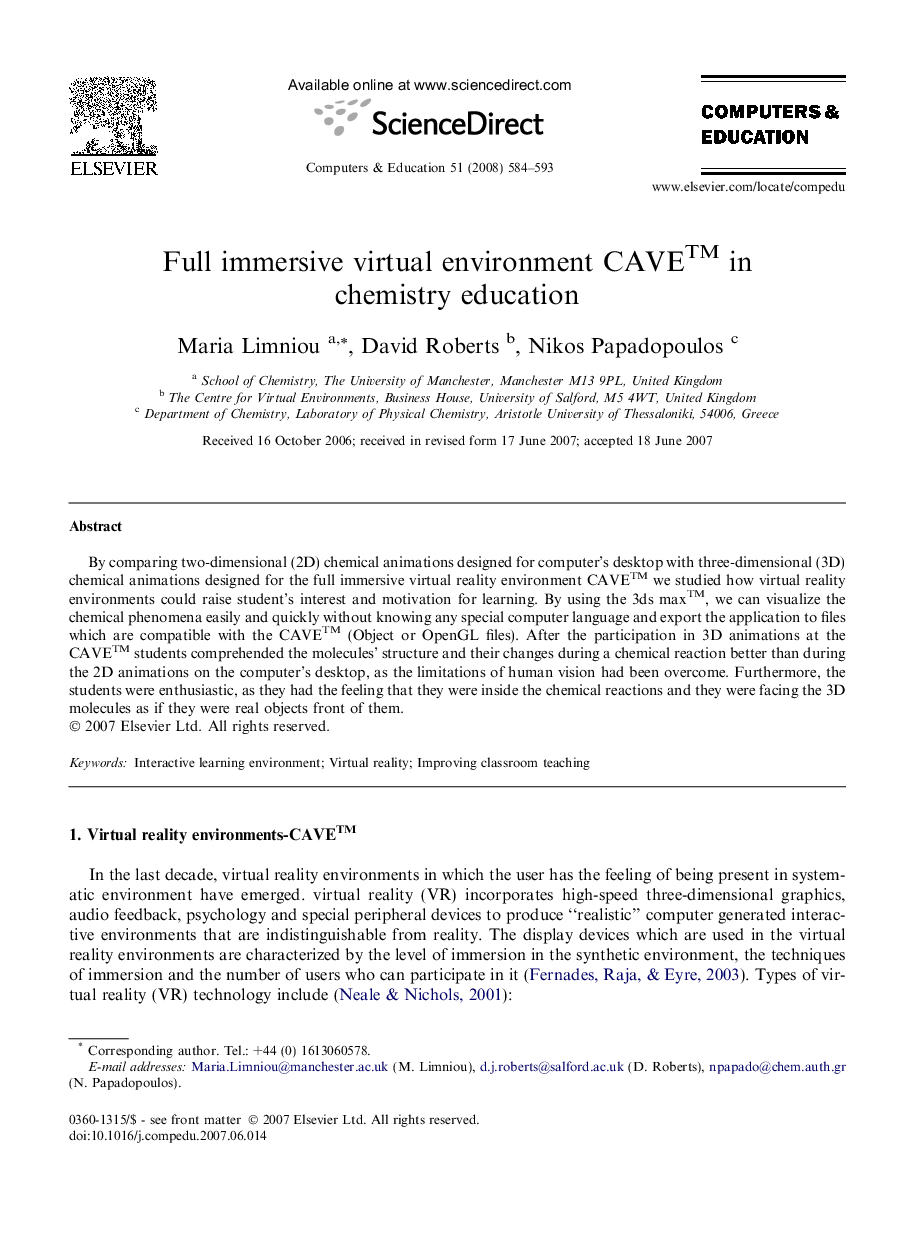| Article ID | Journal | Published Year | Pages | File Type |
|---|---|---|---|---|
| 349754 | Computers & Education | 2008 | 10 Pages |
By comparing two-dimensional (2D) chemical animations designed for computer’s desktop with three-dimensional (3D) chemical animations designed for the full immersive virtual reality environment CAVETM we studied how virtual reality environments could raise student’s interest and motivation for learning. By using the 3ds maxTM, we can visualize the chemical phenomena easily and quickly without knowing any special computer language and export the application to files which are compatible with the CAVETM (Object or OpenGL files). After the participation in 3D animations at the CAVETM students comprehended the molecules’ structure and their changes during a chemical reaction better than during the 2D animations on the computer’s desktop, as the limitations of human vision had been overcome. Furthermore, the students were enthusiastic, as they had the feeling that they were inside the chemical reactions and they were facing the 3D molecules as if they were real objects front of them.
